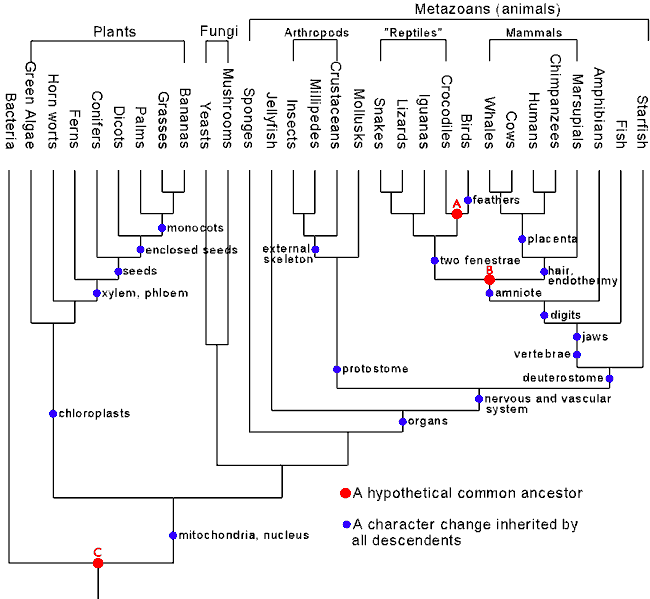Here is another example of a
Paraphyletic illusion creating fake ancestral lineages. Here we are looking at the
Reptiliomorpha group, which is one of the "
-Morph" groups, which are named to give the impression that they are some kind of primitive prototype group that gave rise to the more streamlined "non-Morph". These will also sometimes be referred to as
Stem groups (or close relatives of the stem), which again conveys the illusion that they are some kind of primitive ancestral lineage.
Reptiliomorpha is loosely defined as a Tetrapod stem group of Amniotes (egg-laying on land). They are not quite Amniotes, but more closely related to Amniotes than Amphibians. So we see the paraphyletic grouping in that they are
Reptile-like Tetrapods minus Amniotes. So in this way, Reptiliomorpha is used as an imaginary data point: an ancestral Group that gives rise to Amniotes. Basically they are presented as a
group transitioning into amniote Reptiles.
The reason they seem to be labeled as "Reptiliomorpha" and not simply "Reptiles" is because the evolutionary transition would appear to be too sudden a leap from Amphibians to Reptiles. That is to say that
no sooner had the late Devonian/early Carboniferous "fish-a-pods" sprouted basal tetrapod limbs for an amphibious lifestyle, then there were suddenly terrestrial lizards running around all over the place. This does not sound like an evolutionary transition.
Such sudden leaps can be blended and massaged into a series of seemingly gradual steps with these fake proto-lineages.
Because reproductive systems typically do not fossilize, these "reptiliomorphs" can generally be classified as "
looking like amniote reptiles but not quite" or "
non-amniote reptiles". The non-amniote reptiles gave rise to the true reptiles. And the true reptiles group will nest within the "Reptiliomorphs". This provides the illusion that some kind of primitive, ancestral lineage, or stem group has been identified.
This is how they are described on Wikipedia:
During the Carboniferous and Permian periods, some tetrapods started to evolve towards a reptilian condition. Some of these tetrapods (e.g. Archeria, Eogyrinus) were elongate, eel-like aquatic forms with diminutive limbs, while others (e.g. Seymouria, Solenodonsaurus, Diadectes, Limnoscelis)
were so reptile-like that until quite recently they actually had been considered to be true reptiles, and it is likely that to a modern observer they would have
appeared as large to medium-sized, heavy-set lizards.
http://en.wikipedia....tionary_history
Some "Reptiliomorphs":
Solenodonsaurus
Liminoscelis
Diadectomorpha
Westlothania













